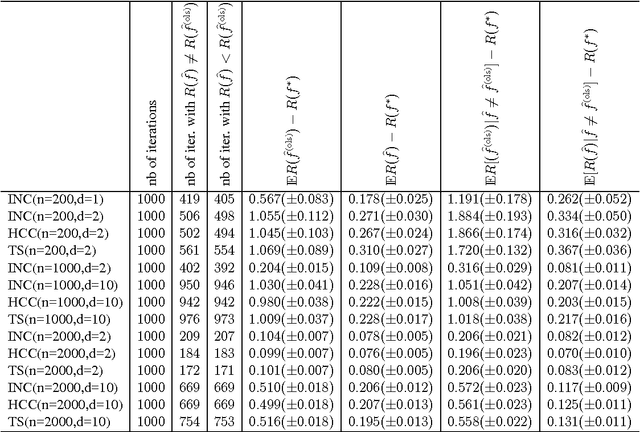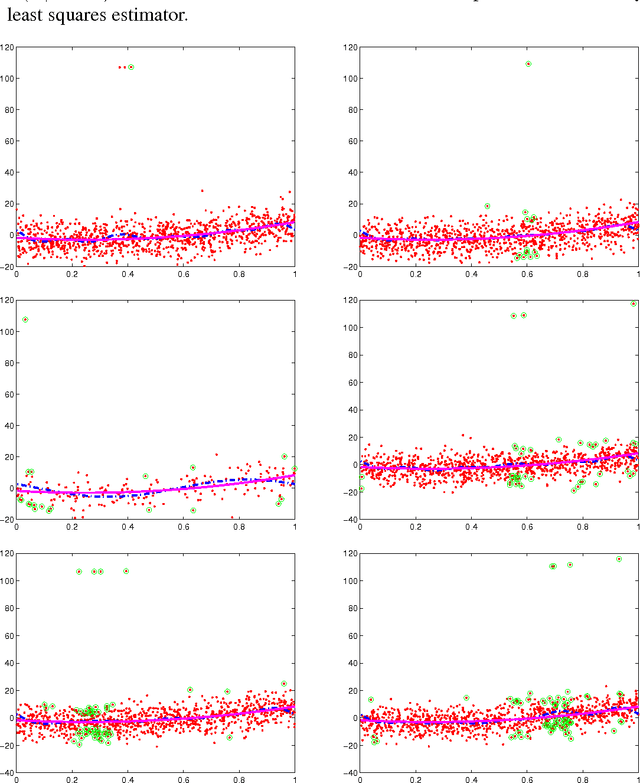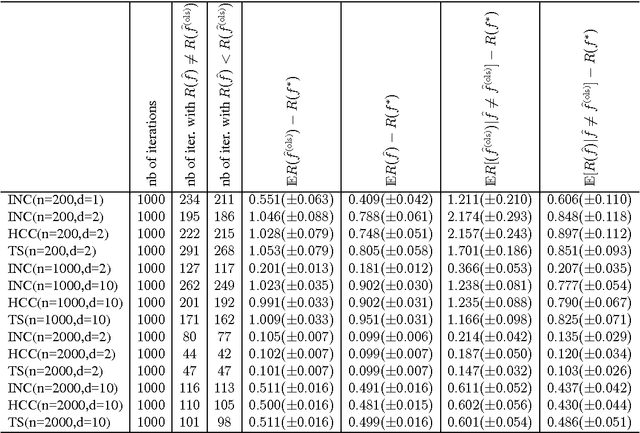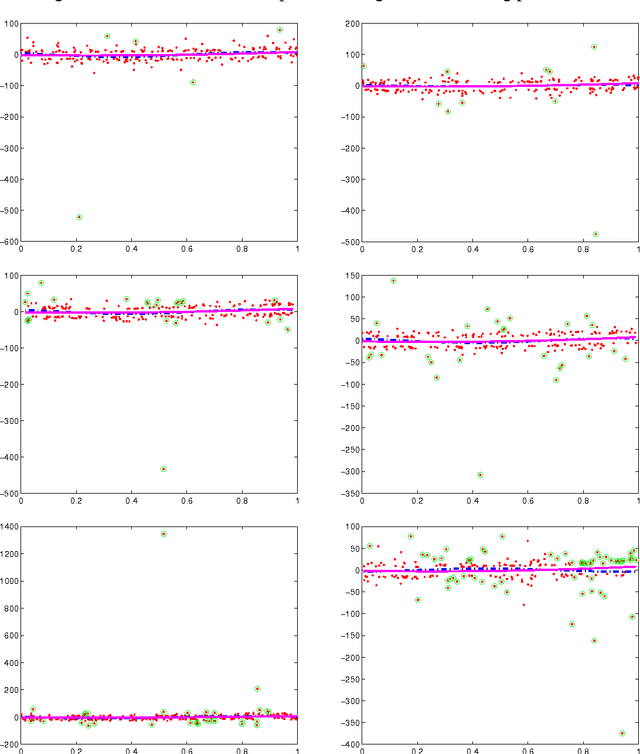Risk bounds in linear regression through PAC-Bayesian truncation
Paper and Code
Jul 04, 2010



We consider the problem of predicting as well as the best linear combination of d given functions in least squares regression, and variants of this problem including constraints on the parameters of the linear combination. When the input distribution is known, there already exists an algorithm having an expected excess risk of order d/n, where n is the size of the training data. Without this strong assumption, standard results often contain a multiplicative log n factor, and require some additional assumptions like uniform boundedness of the d-dimensional input representation and exponential moments of the output. This work provides new risk bounds for the ridge estimator and the ordinary least squares estimator, and their variants. It also provides shrinkage procedures with convergence rate d/n (i.e., without the logarithmic factor) in expectation and in deviations, under various assumptions. The key common surprising factor of these results is the absence of exponential moment condition on the output distribution while achieving exponential deviations. All risk bounds are obtained through a PAC-Bayesian analysis on truncated differences of losses. Finally, we show that some of these results are not particular to the least squares loss, but can be generalized to similar strongly convex loss functions.
 Add to Chrome
Add to Chrome Add to Firefox
Add to Firefox Add to Edge
Add to Edge